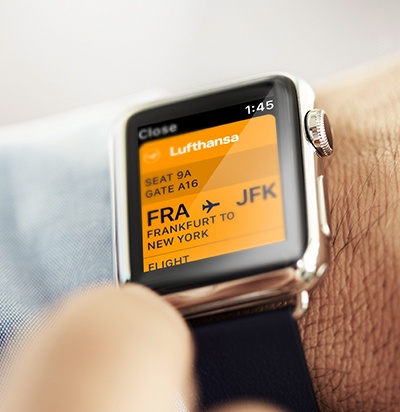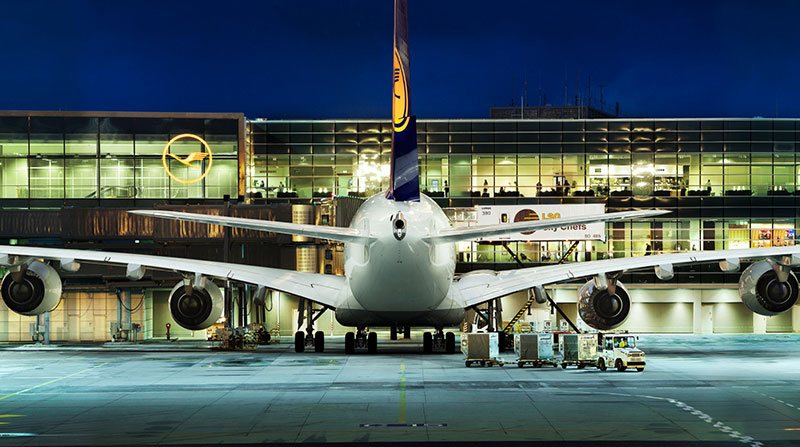
Lufthansa increases efficiency by 30%, gains flexibility and departmental autonomy
30% time savings in data preparation and analysis
Increased autonomy through self-service reporting
Gained competitive advantages through real-time analysis
Lufthansa Group is a global aviation group with more than 550 subsidiaries and associated companies. In 2016, Lufthansa generated annual sales of almost EUR 32 billion with approximately 124,300 employees.
Lufthansa managers Heiko Merten, Christian Novosel and Fabian Schmick report how with Tableau, they have saved 30% of data preparation time, gained a whole new degree of autonomy in the specialist departments, achieved greater flexibility in decision-making, and established a fact-based decision culture within the Group.
For us, self-service means that we become more efficient in day-to-day business and can see and understand our data without having to involve the IT department, for example.
30% time savings through standardization and report automation
Although Lufthansa has been a very analytical and data-driven company for a long time, there was no uniform group reporting in 2016. Heiko Merten, Head of BI Applications in Sales at Lufthansa, remembers: “Each department had its own reporting system and there were no uniform standards. The development of each new analysis had to be formally applied for in the IT department and often took a long time because of the high workload, which resulted in a constantly growing backlog.”
In addition, the individual effort for data preparation was very high, so that comparatively little time remained for the real information analysis: “The original ratio between data preparation and analysis/interpretation of the results was about 80:20,” explains Heiko Merten.
At the instigation of the sales department, Lufthansa began searching for a new Group-wide reporting solution. This was a good time to do so, because at that time Swiss and Austrian Airlines also had to be linked to the Lufthansa umbrella brand under uniform reporting standards.
The new solution was intended to make the departments more independent of the IT department and to enable extensive self-service reporting. Fabian Schmick, Senior Manager Corporate Strategy at Lufthansa, explains: “Our main focus in selecting the solution was on user-friendliness.” And the company's typical data sources should be easy to connect to.
“Lufthansa is in a comfortable position because we have many useful data sources in different technology infrastructures,” explains Fabian Schmick. “We have Teradata, we have SAS, we have Oracle databases that we analyze, but also simple Excel spreadsheets and sometimes—from time to time—we also add external information such as from social media or Flightradar24.”
Reporting at Lufthansa used to be mainly paper-based. Reports were distributed and consumed in PDF format. As soon as new questions arose from an analysis, it was necessary to develop a new report. This took a lot of time and cost a great deal of time and effort due to the amount of data preparation.
Heiko Merten
“With Tableau, it is much easier to consolidate different data sources in a fast and interactive format,” explains Christian Novosel, Head of Strategic BI Initiative at Lufthansa. “We can now make data-based decisions live in a meeting. Acceptance reaches all the way to the board level with our CFO, who supports our initiative.”
The time saved is also enormous. “By using Tableau, we have been able to accelerate processes considerably,” explains Christian Novosel. “This allows us to automate and standardize most of the standard reporting. I would say that we now have about 30% more time to dig deeper and carry out analyses that are more specific. In this way, Tableau helps us to analyze the exponentially growing volumes of data and to keep pace with the changes in our industry.”
Heiko Merten adds: “We have now reached a 60:40 ratio of the former 80:20 ratio between data preparation and data analysis. We are on the right track. But my goal is definitely to turn the original relationship completely upside down someday.”
In addition, Tableau has introduced uniform standards and key performance indicators throughout the Group. Heiko Merten reports: “Now everyone knows that we're talking about the same thing and the same numbers based on the same 'single source of truth'. This has greatly improved our cooperation across various departments and companies within the group.”



A lot of people have now understood the central importance of data for the success of a company like Lufthansa.
More autonomy for specialist departments through self-service reporting
“For us, self-service means that we are becoming more efficient in our day-to-day business,” explains Fabian Schmick. “And we can see and understand our data without having to involve the IT department, for example. We want to be able to derive information and interesting insights from it that we were not able to recognize before in order to develop new ideas for our business.”
After the proof of concept, Tableau adoption in the company grew rapidly, starting in the sales department and moving across other departments. Within twelve months, Lufthansa evolved from a handful of users to approximately 80 Tableau Desktop users. Today, there are around 500 people who consume Tableau reports and analyses via Tableau Server.
Lufthansa benefits from the new solution in the form of greater independence and faster results, especially in the specialist departments. Heiko Merten explains: “Now we are in a much stronger position than before to create and design our own analyses independently. This is well received by the specialist department. And I think that both sides-the IT and specialist departments—benefit from this. A lot of people have now understood the central importance of data for the success of a company like Lufthansa.”
By using Tableau, we were able to accelerate the processes considerably. This allows us to automate and standardize most of the standard reporting. I would say that we now have about 30% more time to dig deeper and carry out analyses that are more specific. In this way, Tableau helps us to evaluate the exponentially growing volumes of data and to keep pace with the changes in our industry.
Fabian Schmick
Analytics create competitive advantages
Christian Novosel believes that this new rapid decision making will differentiate Lufthansa from the competition: “I firmly believe that this is a decisive competitive advantage for any company and distinguishes successful companies from the others. The provision of these opportunities up to the board level makes the right information available to top decision-makers at the right time throughout their day-to-day business, thus bringing decisive advantages.”
Fabian Schmick has also personally benefited from the new solution: “Tableau supports me in communicating my messages better. With the help of this interactive platform, I am in a position to answer more questions directly in discussions with management than before. This is a big advantage of Tableau for my daily work in the strategy department.”